Jirisan Hanok Village [Korea Quality] / 지리산한옥마을 [한국관광 품질인증]
13.2Km 11964 2024-04-07
43 , Daejeongbangcheon-gil, Namwon-si, Jeonbuk-do
+82-63-636-1003, +82-10-8107-1838
Jirisan Hanok Village, in Namwon-si, Jeollabuk-do, is a famous old house at the foot of Jirisan National Park’s Cheonwangbong and Nogodan Peaks. Just 20 minutes by car away from Nogodan and Baemsagol Valley Trail, the place is popular with walkers especially in the summer. Businessmen, poets and writers come here for the beautiful scenery; in particular, a candidate for the 2008 Nobel Prize in Literature stayed and worked here for a while.
Gurye Cheoneunsa Temple (천은사(구례))
13.2Km 14499 2021-10-02
209, Nogodan-ro, Gurye-gun, Jeollanam-do
+82-61-781-4800
Located north of Gurye on Jirisan Mountain, and built during the Unified Silla Period, Cheoneunsa Temple is one of the three great Buddhist temples of Jirisan Mountain. Cheoneunsa Temple is believed to have been built by Monk Deokun and Monk Seru from India in AD 828 during the 3rd year of King Heungdeok. Because it initially laid next to spring water as clean and cold as a morning dew, the temple was also called Gamrosa, meaning Sweet Dew Temple. The spring water was rumored to clean one’s body and soul, leading to crowd of Buddhist monks to visit the temple. During King Chungryeol’s reign, the temple was named the Best Temple in the south.
The temple was burned down during the Imjin War (1592-1598) and then later rebuilt and renamed Cheoneunsa. Legend has it that while the temple was being rebuilt, a large serpent often came out of the spring. When the serpent was finally captured and killed, the spring waters suddenly dried up. Hence the name Cheoneunsa, meaning Disappearance of Spring Water, was given.
[Jirisan Trail Course] Inwol-Geumgye
13.4Km 5195 2024-04-06
308-1 Junggun-ri, Inwol-myeon, Namwon-si, Jeonbuk-do
Inwol-Geumgye Trail Course is part of the Jirisan Trail, starting from Inwol-myeon, Namwon-si, Jeollabuk-do, and passing through Deunggujae in Hamyang-gun, Gyeongsangnam-do, before reaching the village of Geumgye. Covering a distance of 20.5 kilometers, completing the trail typically takes around 10 hours, leading many travelers to plan a 1-night, 2-day itinerary. Along the way, hikers can enjoy the majestic landscapes of Jirisan Mountain, vast rice paddies, and visit six mountain villages.
Jirisan Cheese Land (지리산치즈랜드)
13.7Km 0 2023-03-17
1590-62 , Saneop-ro, Gurye-gun, Jeollanam-do
Chowon Ranch, which started milking with two cows in 1979, built Jirisan Cheese Land, an experience ranch, in 2012 to introduce the dairy industry and milk to more people based on its 30 years of experience. Jirisan Cheese Land distributes homemade cheese and yogurt, and at the experience center, you can experience making mozzarella cheese, feeding calves, and riding a grass sleigh. Over 130 dairy cows are grazing in the green meadow pasture, and the lake is adjacent to it, creating beautiful scenery. The specialty of Jirisan Cheese Land is nature. The dazzling greenery and fragrance of scenery, flowers, and grass are the special features.
Jirisan Recreational Forest (국립 지리산자연휴양림)
13.8Km 114590 2024-02-23
152 Eumjeong-gil, Macheon-myeon, Hamyang-gun, Gyeongsangnam-do
Jirisan Recreational Forest safeguards the splendid natural beauty of Jirisan Mountain. Positioned 600 to 700 meters above sea level, the region surpassing 700 meters is designated as a national park. The forest features a range of amenities including accommodations, a forest student camp, various trails, a forest park, and a suspension bridge. The significant temperature variation in the area contributes to the breathtaking display of autumn foliage.
Namwon Silsangsa Temple (실상사(남원))
13.9Km 8876 2024-04-07
94-129, Ipseok-gil, Namwon-si, Jeonbuk-do
+82-63-636-3031
Silsangsa Temple was constructed by Monk Jeunggak, as one of nine special temples in the year 828. The temple was established because of the theory of divination, based on topology. The belief held that Korea’s good spirit would be taken away to Japan, bringing bad luck if the temple was not constructed at this particular location. The temple was reconstructed in the 26th year of King Sukjong’s reign (1700) after it was completely destroyed during the Imjin War (1592-1598). However, it was almost burnt down in the 19th year of King Gojong’s reign (1882).
It is presently preserved just as it was during the Unified Silla Kingdom, with its three-story pagoda and its 11 treasures with a total of 17 cultural assets. The entrance of the temple lies in the middle of a rice field and the temple has a pastoral view, surrounded by trees. From the entrance, visitors can cross the half-moon shaped stone bridge to find a remarkable totem pole.
Gurye Special Tourist Zone (구례 관광특구)
15.1Km 24065 2020-03-18
539, Hwaeomsa-ro, Gurye-gun, Jeollanam-do
+82-61-780-2450
The vast region of the Gurye Special Tourist Zone comprises Toji-myeon, Gwangui-myeon and Sandong-myeon, which has a river and an open field surrounding the mountainous area. Every part of Gurye deserves the title of Special Tourist Zone for offering many things to see. Well-known for its rich soil, the most outstanding natural resources of Gurye is Jirisan National Park, the first to be designated as a national park, and Seomjingang River.
Every year, many hikers visit Jirisan National Park, also called the “bosom of a mother.” The park is cherished for its unpolluted scenery, such as its deep and wide geographical features and crystal clear valleys. The park offers diverse hiking trails and has mountain retreats for backpackers.
Jirisan Dulegil Trail that runs along the periphery of Jirisan Mountain is where one could enjoy the experience of mountain glens, different from mountaineering. On their way hikers and trekkers can see groups of Sansuyu (cornus fruit) in spring as well as the autumnal tints of the mountain and valley in autumn.
Another strength is that the park has different types of accommodations including Hanok (Korean traditional house) homestay and a guest house, apart from leisure facilities including hot springs in Jirisan. The park is a great place for historical inquiries as it is filled with historic temples, including Hwaeomsa Temple and Yeongoksa Temple, and historic relics. Flowing from Gokseong to Hadong, Seomjingang River creates a tranquil ambience. The cleanest ever in Korea, a large number of marsh snails and sweetfish live in this river. Visitors can also enjoy the scenic view from the riverside road and various festivals which are held all year round, such as the Sansuyu Festival, the Seomjingang Riverside Cherry Flower Festival and the Piagol Autumn Foliage Festival.
* Current State of Gurye Special Tourist Zone
1) Districts Covered / Areas around Toji, Masan, Gwangui and Sandong-myeon, Gurye-gun, Jeollanam-do
2) Area / 78,024,000㎡
* Tourist Attractions
Jirisan Mountain, Seomjingang River, Jirisan Spa Land, Piagol Valley, Sansuyu Theme Park, Hwaeomsa, Cheoneunsa and Yeongoksa Temple, Hanok Village, etc.
Hwaeomsa Temple (화엄사)
15.2Km 40035 2021-02-05
539, Hwaeomsa-ro, Gurye-gun, Jeollanam-do
+82-61-783-7600
Situated at the foot of Jirisan Mountain, 5.4 kilometers east of Gurye-eup, Hwaeomsa Temple was constructed in the 22nd year of King Seong's reign (544) during the Baekje era, but was burnt down during the Imjin War (1592-1598). The temple was rebuilt in 1636 after seven years of reconstruction. The temple has various cultural assets including National Treasures, Treasures, a Natural Monument, and local cultural assets as well as 20 different buildings.
Jirisan National Park (Hamyang Section) (지리산국립공원(함양))
16.2Km 22010 2021-02-05
Baengmudong-ro, Hamyang-gun, Gyeongsangnam-do
+82-55-970-1000
Designated as the first national park in Korea on December 29, 1967, Jirisan National Park stretches out over 483.022 square kilometers, making it the largest national park among all 22 national parks. It covers Korea’s three southernmost provinces; Gyeongsangnam-do, Jeollanam-do, and Jeollabuk-do, one city, four counties, and 15 districts of eup and myeon. The area in Gyeongsangnam-do has Ssanggyesa Temple, Daewonsa Temple, Beopgyesa Temple, Chilbulsa Temple, and Chilsangsa Temple as well as valleys, falls, and other tourism resources. In particular, famous tourist spots in Hamyang area are Chilseongyegok Valley and Hansingyegok Valley.
Hotel Jirisan Haetsal [Korea Quality] / 지리산햇살 [한국관광 품질인증/Korea Quality]
16.5Km 61 2021-03-27
386-3, Hwaeomsa-ro, Gurye-gun, Jeollanam-do
+82-61-783-9600
This hotel is located about 300 m away from Jirisan National Park’s Nambu Visitor Center. Built with red bricks and having an orange roof and grass lawn, the hotel resembles a country home. The hotel is surrounded by Jirisan Mountain to the back, and the Masancheon Stream, a branch of Seomjingang River, flowing through the area offers a great view for the visitors. There are five types of rooms, accommodating 2, 4, and 6 guests. A cleaning service is offered every day. The rooms have white walls and wood floorboards, tastefully furnished in a minimalist style. The wide windows offer a great view of the lawn and the mountains. All rooms other than the 4-person ondol (under-the-floor heating system) room are bedrooms, and the 6-person Special Room comes with a wooden terrace. Visitors can enjoy grilling by the valley. The hotel is located about 10 min by car from Gurye Public Bus Terminal. Hwaeomsa Temple, a temple with a thousand-year history, is located only 2 km away from the hotel, while a 10-min drive brings one to Gurye Fifth-day Market and “Unjoru House, Gurye,” which is the Folk Cultural Heritage No. 8 of Korea.
![Jirisan Hanok Village [Korea Quality] / 지리산한옥마을 [한국관광 품질인증]](http://tong.visitkorea.or.kr/cms/resource/58/3042358_image2_1.jpg)

![[Jirisan Trail Course] Inwol-Geumgye](http://tong.visitkorea.or.kr/cms/resource/73/1918173_image2_1.jpg)
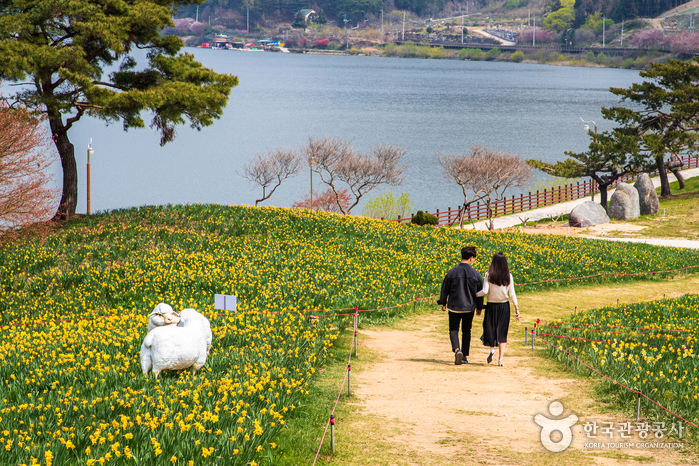
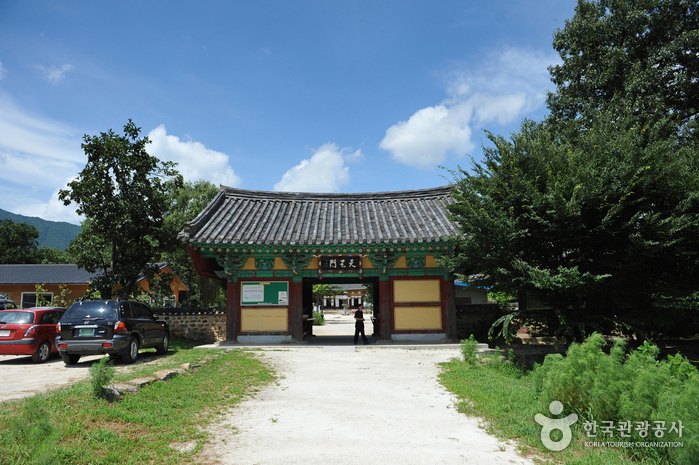
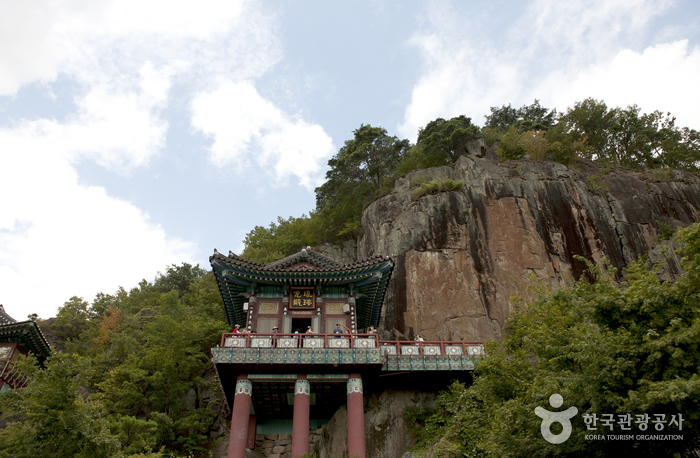
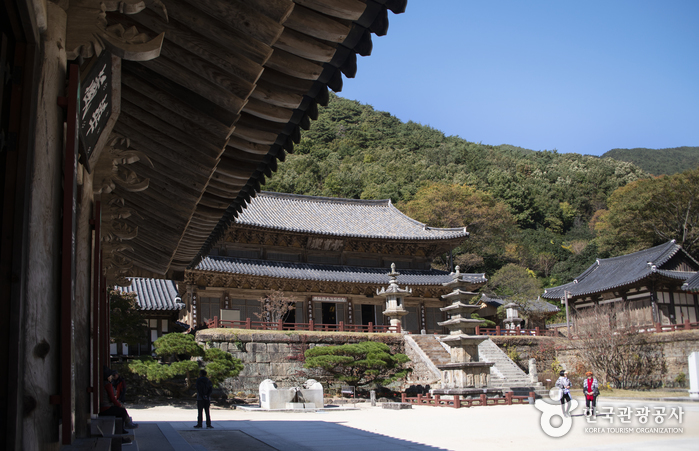
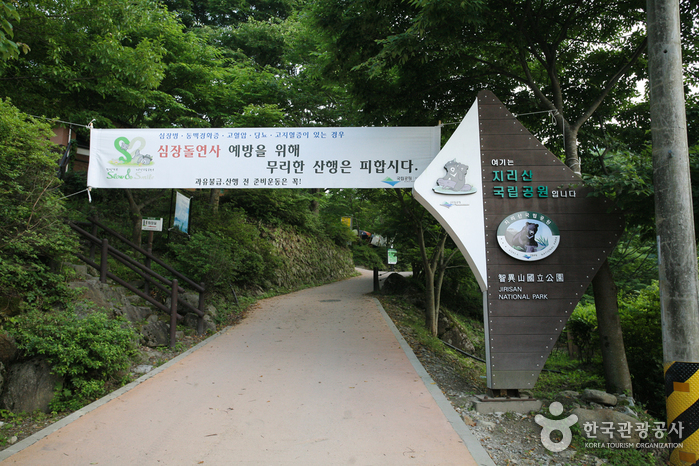
![Hotel Jirisan Haetsal [Korea Quality] / 지리산햇살 [한국관광 품질인증/Korea Quality]](http://tong.visitkorea.or.kr/cms/resource/03/2708603_image2_1.jpg)
 English
English
 한국어
한국어 日本語
日本語 中文(简体)
中文(简体) Deutsch
Deutsch Français
Français Español
Español Русский
Русский